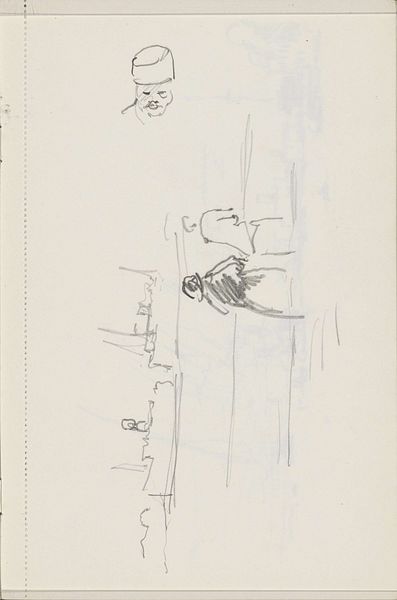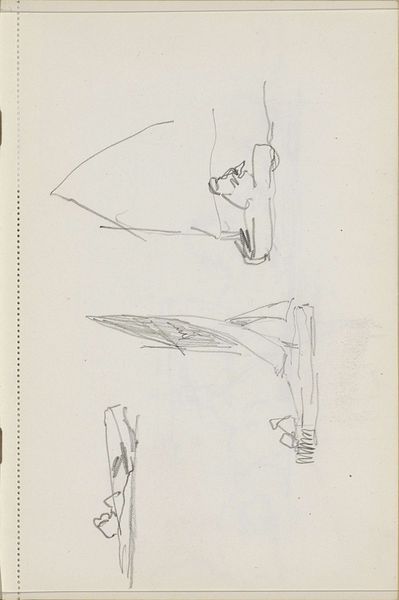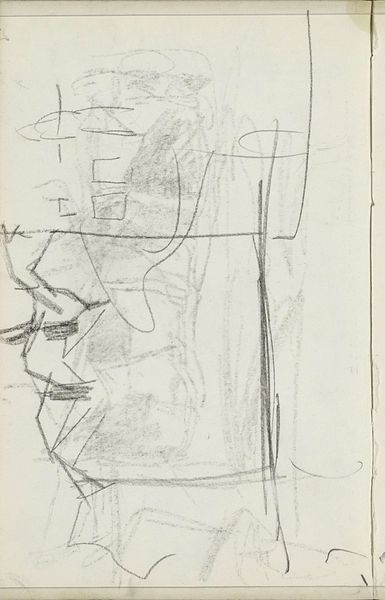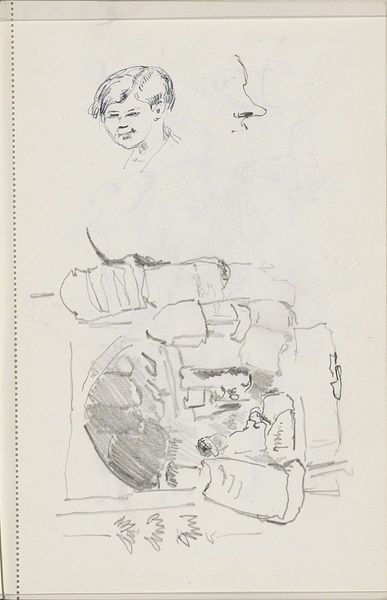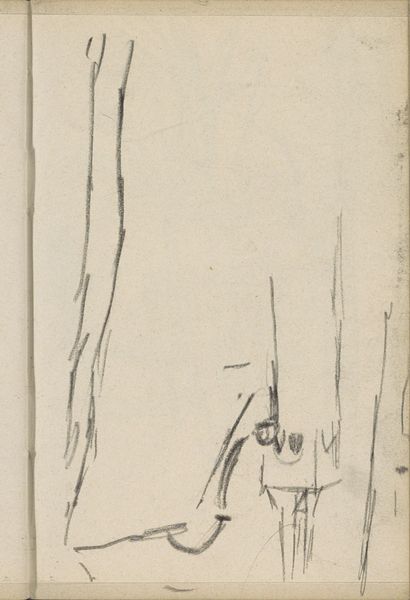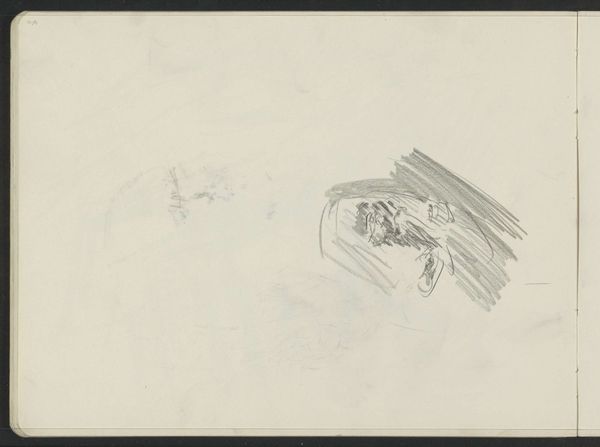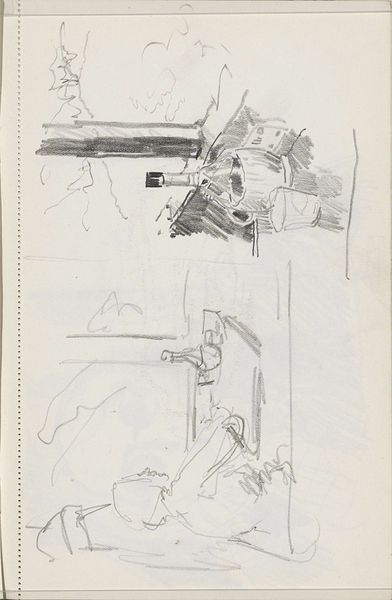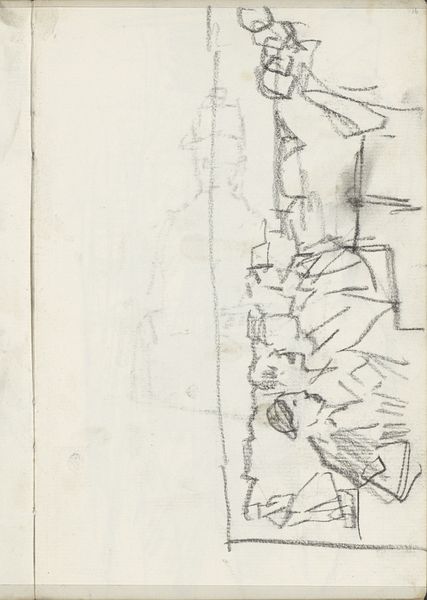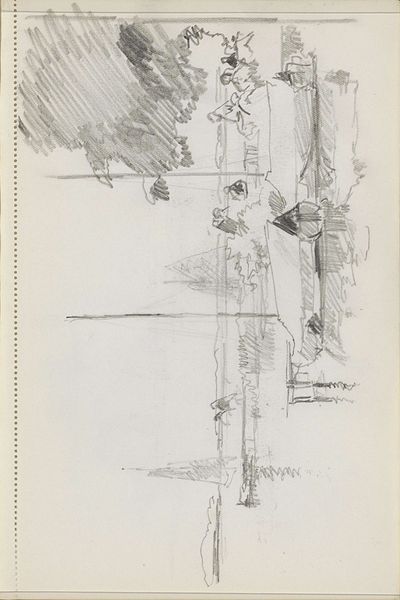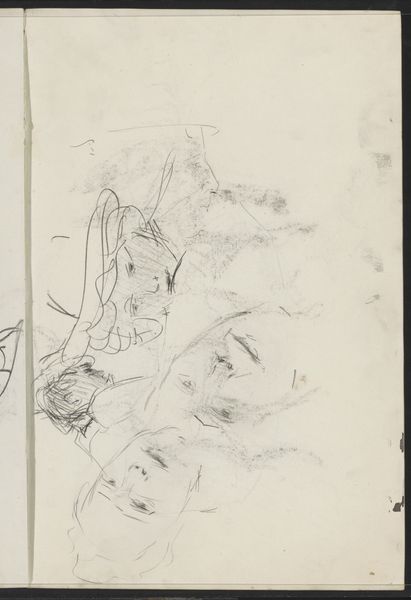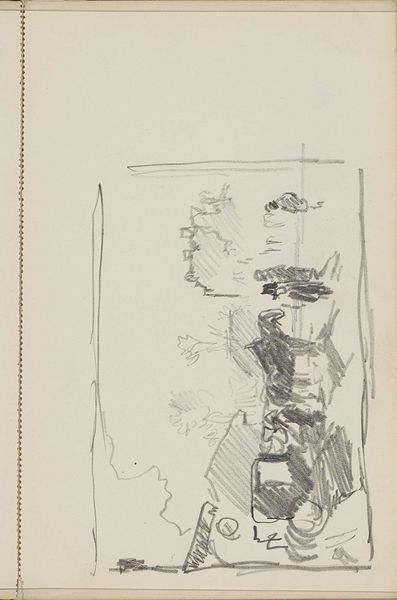
drawing, pencil
#
portrait
#
drawing
#
face
#
form
#
pencil
Copyright: Rijks Museum: Open Domain
Curator: This sketch by Cornelis Vreedenburgh, entitled "Handcart on a street and a face," dating from sometime between 1890 and 1946, offers an intriguing glimpse into the artist's working process. Made with pencil on paper, it’s currently held here at the Rijksmuseum. What stands out to you most at first glance? Editor: The raw quality. The materiality of the pencil on this surface, with visible marks—it reveals a thinking process more than a finished statement. Curator: Absolutely. Look at the juxtaposition of the cart, somewhat schematically rendered, and the more expressive face at the bottom. I'm fascinated by how these two seemingly disparate images find harmony on the page. Could the face represent someone the artist observed in the street, perhaps a figure linked to the handcart's world? Editor: It makes me wonder about the artist's immediate surroundings. What was the landscape, both economic and physical, that compelled him to capture this particular scene? The sketch hints at a working-class context through its rendering of the tools or byproducts of work. Curator: It's interesting to think about the formal qualities too. The sparse composition, the suggestive lines-- they feel almost dreamlike. And this interplay is a potent blend. It draws from a tradition of realism, observing ordinary life while, at the same time, approaching an almost unconscious symbolic depiction. Editor: Given the sketch's likely placement within a sketchbook, its utilitarian nature strikes me. Pencil allowed portability, easy editing, no extensive cleanup. The social status of these objects are inherently connected, even though it could have been made by a bourgeois artist. The connection of materiality, mark-making, and access is often forgotten when considering artworks of this nature. Curator: A powerful point about the relationship between materiality and intention. Vreedenburgh provides us with fragments of life and invites us to consider not just what they are, but what they meant, or could mean, both to him and to us today. Editor: This quick sketch is so revealing, as a glimpse into the moment when labor and the face meet, a quiet nod to those easily forgotten by traditional history paintings.
Comments
No comments
Be the first to comment and join the conversation on the ultimate creative platform.

